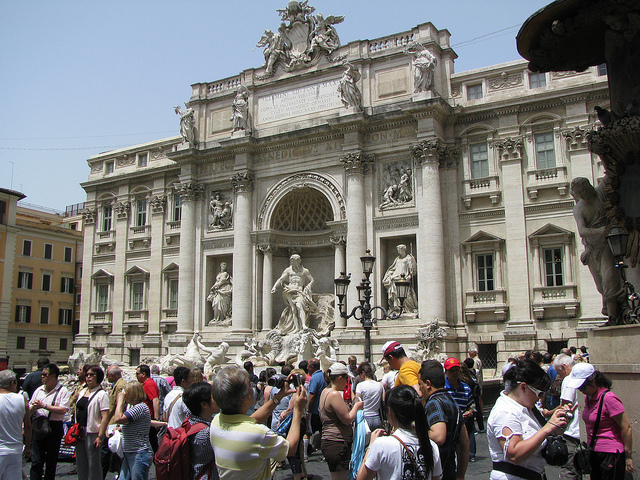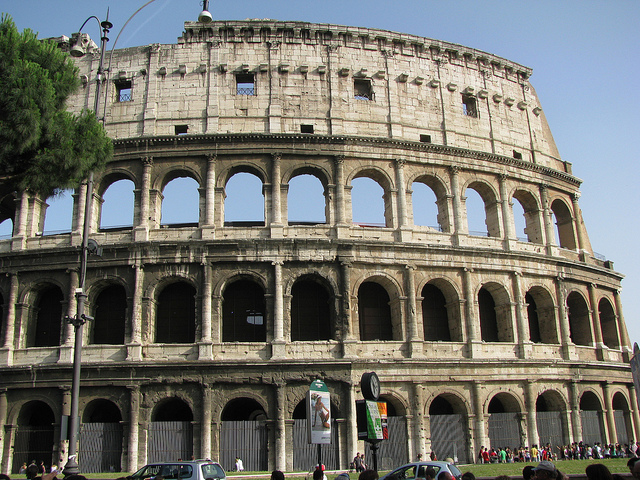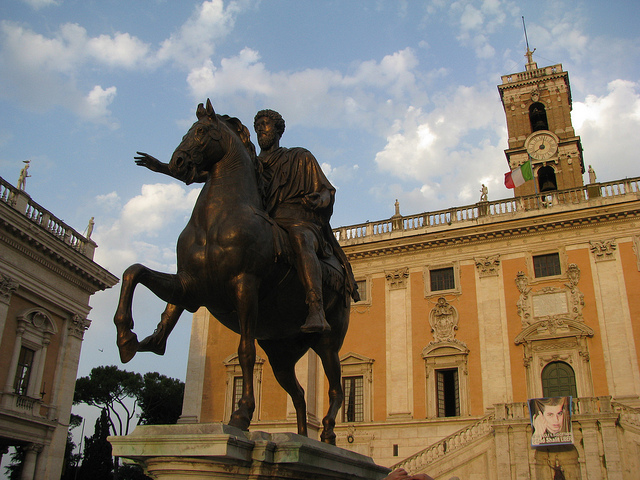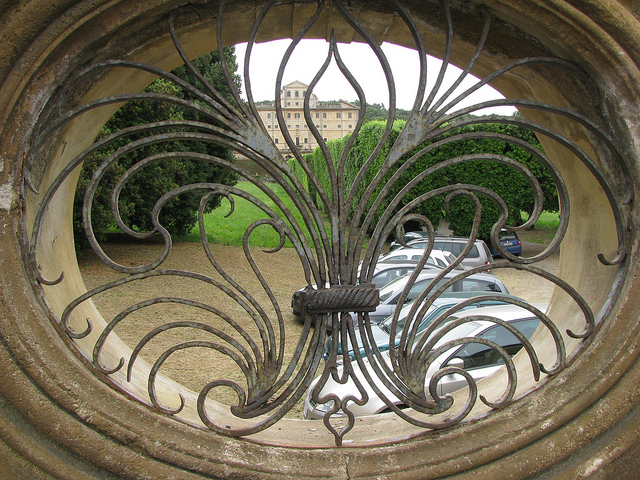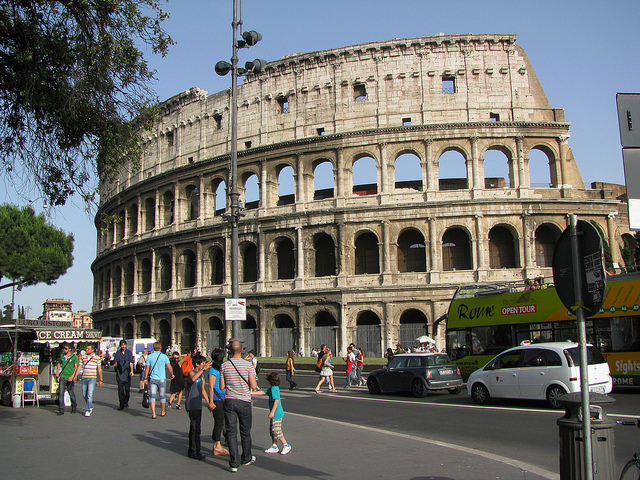The weather in Rome was absolutely perfect on my second day of explorations around the Eternal City. In the morning I decided to use up the rest of my 24 hour ticket for the sightseeing bus and I went four stops from Piazza della Repubblica to the Piazza Bocca della Verita where I got off the bus. Leaving the Roman Forum behind me I walked towards the Tiber River and had to cross a major street which felt like taking my life in my own hands, given the aggressive and impatient driving habits of the Romans.

Traffic in Rome can be a bit hair-raising sometimes
Once across the street I crossed the Tiber River on the Ponte Palatino and started walking northwards on the western river bank. The remnants of the Ponte Rotto (the “broken bridge”), an old bridge from the 2nd century AD, were lying photogenically inside the river bed. Along my riverside walk I admired the Smart Cars that were parked sideways in tiny parking spots along the Tiber River. Just a bit further north I crossed another bridge to get across to the Isola Tiberina, the island in the Tiber River.

The Ponte Rotto with Tiber Island in the background
Tiber Island has long been associated with the sick ever since, in 293 BC, a temple was dedicated to Aesculapius, the god of healing and the protector against the plague. Today it still houses a hospital, the Ospedale Fatebenefratelli, which was founded in the late 1500s. The ancient Temple of Aesculapius now lies buried for many centuries under the San Bartolomeo church that was built in the 10th century. Rome is a collection of layers and layers of antiquity.

A fashion shoot in Rome
After crossing back to the left bank of the Tiber I continued my walk past a fashion shoot with three attractive models. They attracted a crowd, but the producers were shooing everyone away that wanted to take a picture of the photo shoot. Further on I reached the Vatican and walked up the Via della Conciliazione until I was standing on the large square right in front of Saint Peter’s Basilica. Thousands of people were attending mass, and a policeman confirmed for me that it was indeed Pope Benedict XVI who was holding mass. The area in front of the church was roped off and only priests, monks and nuns were allowed to sit inside the restricted area.

Pope Bendict XVI is reading mass
Having observed the proceedings for a while, I turned around and walked into a local church: Santa Maria in Transpontina, a Carmelite church that stands on the site of an ancient Roman pyramid. Further on I admired Castel Sant’Angelo, a massive fortress that was started in 139 AD as the mausoleum of Emperor Hadrian. The tomb was converted into a military fortification in 401 and was also used as a fortress and residence for the Pope as well as a prison. Since 1901 the fortress holds a museum to the castle’s history.

The Castel Sant’Angelo and the bridge with some of its statues
Just outside the castle, the Ponte Sant’Angelo is a splendid structure, completed in 134 AD by Roman Emperor Hadrian. Today it only accommodates pedestrians who all admire the 10 angel statues that flank the bridge’s abutments. Back on the east side of the Tiber River, I continued my walk into the Piazza Navona district which features narrow streets filled with many cafes, bars and restaurants.

The Piazza Navona with the Fontana dei Quattro Fiumi
